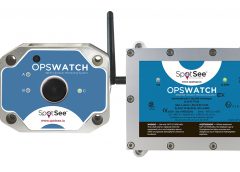by Kraig J. Nunn
We live in a world where failure is a very real thing. A world where the smallest change in a machine’s operations can lead to complete breakdown. Bearings, belts, drive motors and gears are just a few of the parts that make up industrial equipment. Although each piece serves its own purpose, the failure of one could be catastrophic to all.
When it comes to preventing malfunctions, there is typically one main course of action that companies take: preventative maintenance. While beneficial in theory, spending time on maintenance when none is actually required, can lead to wasted resources and a loss in productivity.
A more reliable and efficient, but less-used option is predictive maintenance. Predictive systems work by analyzing a piece of equipment’s operational data to identify patterns that lead to failure. This recognition of deviations from regular operations then helps companies schedule necessary maintenance according to reliable data. As a result, companies run more efficiently, expend resources only when necessary and are better equipped to meet hard production deadlines.
Without a reliable predictive system in place, even companies with regularly scheduled maintenance checkups are susceptible to failure. Depending on the piece of equipment, its size, purpose and reason for breakdown, incidents can range from small mishaps to catastrophic events.
These occurrences, regardless of size, can require operations to stop, disrupting the flow of production. If a site operates in a remote location and lacks a redundancy plan, it becomes dependent on production and delivery timelines. Although rare, not all products are readily available and can require lead times of months or even years to procure. Knowing failure is imminent, no matter how early, can help establish timelines to reduce unplanned downtime.
Any amount of downtime will result in additional dollars being spent to resume operations, whether it be on actual equipment, labor or time. Replacement equipment and additional labor can be costly, especially with such short notice. Although downtime isn’t necessarily a loss in hard costs, the cost associated with a loss of production can also have a major impact on a company’s bottom line.
There are several forms of predictive maintenance available for companies to implement, but the first step toward making a difference is implementing condition-based monitors. Condition monitoring is the process of monitoring a specific condition parameter of a piece of machinery or equipment. In the case of failure, one of the most important aspects to watch is vibration. Most machines with a rotating motor have a normal baseline range of vibration during an operating cycle. Any change to this normal range serves as a warning sign that equipment is no longer operating at peak performance levels. Typically, vibrations increase as a machine approaches failure.
This form of monitoring is highly reliable, with data collection happening in real time to ensure companies are alerted to potential issues in a timely manner. Depending on the type of failure, operators can receive notification within minutes of a deviation occurring. If a blockage failure occurs, notification could come within a few minutes or an hour, giving operators enough time to shut the system down for maintenance to avoid congestion. In regard to gear boxes and motors, companies could be alerted weeks, or even months, in advance of impending failure, allowing for longer lead times when ordering replacement parts.
When applied to high-value equipment, vibration-monitoring devices can have a positive impact on a company’s resources, production and operations. These devices, like SpotSee’s OpsWatch, can visualize changes to equipment’s low-frequency vibration levels and identify changes as they occur. Depending on how essential a piece of equipment is, having the knowledge to prevent potential mishaps can save hours of downtime and labor, and could spare a company from spending thousands, if not millions on repairs, new parts, subsequent clean ups and other associated costs.
Maintenance is a necessary part of operating machinery. Many companies depend on a system based around fixing something when it isn’t broken. Ultimately, companies looking to improve operational efficiency and cut back on resource spending will benefit from implementing predictive-maintenance measures and condition-monitoring devices.
Kraig J. Nunn has been at SpotSee, a global provider of solutions to deter product mishandling and reduce costs in the supply chain, since 2001.

